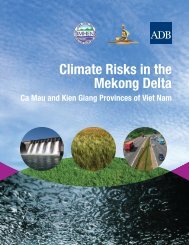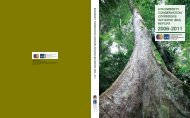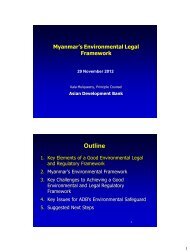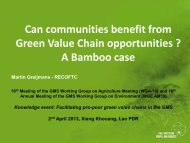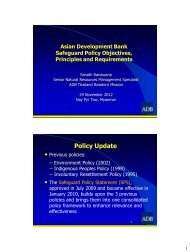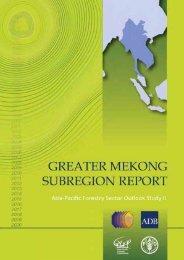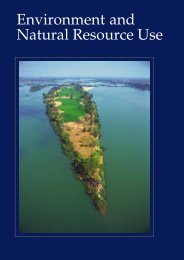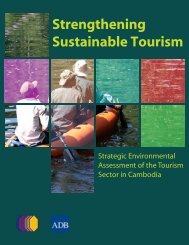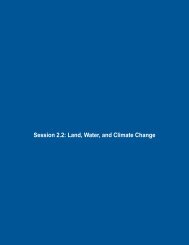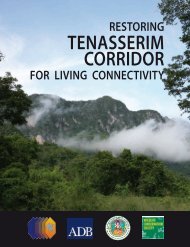Create successful ePaper yourself
Turn your PDF publications into a flip-book with our unique Google optimized e-Paper software.
Ayeyarwady Delta, MyanmarThe Ayeyarwady Delta is a large basin 300-kmlong and 250-km wide lying southwest of Yangonand extending from the shoreline of the Bay of Bengalacross the Bago Range. It collects water fromAyeyarwady, Bago, Yangon, and Pathein rivers,which irrigate millions of ha of agricultural land.Most agricultural processing in Myanmar takes placein the Ayeyarwady Delta.The rainfed lowlands of the Delta account for52% of the country’s rice land. Deep-water rice,planted in Delta floodlands, accounts for a further24% of the rice area. There are two cropping seasons,with harvests in November to January (main season)and April to May (dry season), respectively. Yieldsare relatively low, averaging 3.3 tons/ha. There isroom for yield increases. For example, modernvarieties are planted with little fertilizer use,resulting in declining soil fertility. Several ricevarieties have been developed expressly for the deltaconditions, but inadequate supply of and high costof chemical fertilizers prevent their potential frombeing realized. Excessive flooding in low areas isanother problem associated with the Delta.Chao Phraya Delta, ThailandThe Chao Phraya Delta is a fertile plain in thelower part of the Chao Phraya River Basin with avast agricultural land area for intensive ricecultivation. It has a total area of 1.4 million ha.Although the Delta makes up only 7% of the areaplanted to rice in Thailand, it contributes 20% of thecountry’s rice production.The relatively high production in this area isthe result of several factors: there are many largefarms that are mechanized and irrigation facilitiesare widespread, allowing many farmers to grow tworice crops each year. Each season lasts nearly 6months, with harvests in November–December(main season) and May–June (minor season),respectively. Nevertheless, rice yields nationwideaverage only 2.3 tons/ha, the lowest in the world.This is because farmers tend to grow high-qualitybut low-yielding rice varieties that fetch top pricesboth domestically and internationally.90 Greater Mekong Subregion Atlas of the Environment





